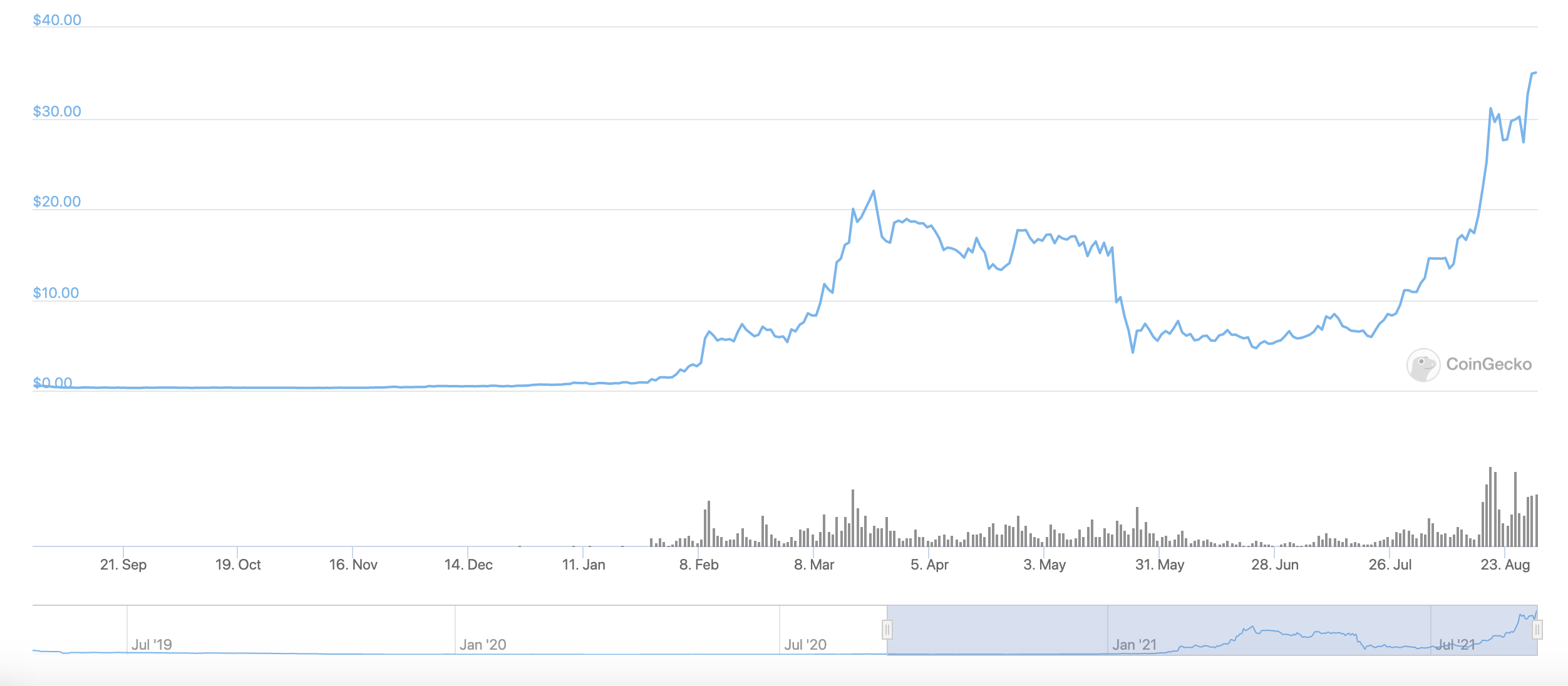
We introduce Terra (LUNA) crypto, the premier programmable money for the internet.
Terra is in fact a blockchain protocol that implements algorithmic stablecoins to power entire payment systems built on the network.
LUNA, the native cryptocurrency of the Terra network, is designed to keep all of Terra’s stablecoins… well, stable.
With a primary use-case of staking to keep the network functioning securely, LUNA is both a utility and governance token.

When it comes to choosing between the price stability of doing business in fiat currencies and the censorship resistance of cryptocurrencies, Terra means that businesses no longer have to compromise.
In an increasingly unstable, yet ever-increasingly globalised world, the unrestricted cross border payment systems that Terra opens up, is a game changer.
Terra’s integrated network of algorithmic stablecoins and the LUNA token at the heart of them all, offers instant settlements, low fees and seamless payments.
No matter where in the world or which fiat currency you wish to transact in.
When it comes to learning about the premier programmable money for the internet, our Terra (LUNA) guide has you covered.
Introduction to Terra (LUNA) crypto
Terra (LUNA) was founded in January 2018 by South Korea’s Daniel Shin and Do Kwon.
Kwon later became CEO of Terraform Labs, the company set up to be the main driving force behind the entire Terra project.
Terra launched its mainnet in April 2019 and the pair’s dream of driving the rapid adoption of cryptocurrency and blockchain technology by focusing on price stability and usability, became a reality.
The main sticking point when it comes to answering what is Terra (LUNA), is the confusion that arises around the LUNA token and the network’s completely separate stablecoins.
Let’s introduce the concept of each below.
The LUNA token
LUNA, the native cryptocurrency of the Terra network, acting as both a utility and governance token.
It is in fact not a stablecoin itself, but instead works to keep all of Terra’s stablecoins priced in comparison to their various fiat pegs.
For example, keeping Terra’s US dollar pegged stablecoin called TerraUSD (UST), pegged to $1.00 USD.
As you can see on the following CoinGecko chart, the price of LUNA continues to rip higher as we make a new market wide bull run.

LUNA has a current circulating supply of 403,075,459.30 LUNA, adjusting up and down in order to keep the network’s stablecoins priced as they should be.
Terra stablecoins
Alongside LUNA, there are a number of fiat-pegged, algorithmic stablecoins on the Terra network.
You see, the LUNA token itself is not actually stablecoin, but instead it exists to facilitate the stability of this separate series of coins.
A variety of the stablecoins available on the Terra network include:
- TerraUSD
- TerraEUR
- TerraCNY
- TerraJPY
- TerraGBP
- TerraKRW
Now that we’ve introduced the basics, let’s move onto how Terra (LUNA) and these stablecoins work, before delving into the rest of our complete guide to Terra (LUNA).
Best of probabilities to you.
Direct from the desk of Dane Williams.
Why not leave a comment and share your thoughts on Terra (LUNA) coin within the comments section below? All comments that add something to the discussion will be upvoted.
This Terra (LUNA) coin blog is exclusive to leofinance.io.
Posted Using LeoFinance Beta
Congratulations @forexbrokr! You have completed the following achievement on the Hive blockchain and have been rewarded with new badge(s) :
You can view your badges on your board and compare yourself to others in the Ranking
If you no longer want to receive notifications, reply to this comment with the word
STOPTo support your work, I also upvoted your post!
Check out the last post from @hivebuzz:
Thanks mate.
The LeoFinance crypto guides project provides an endless stream of post ideas.
You should drop back into our daily live blog and get involved in the project again.
Posted Using LeoFinance Beta